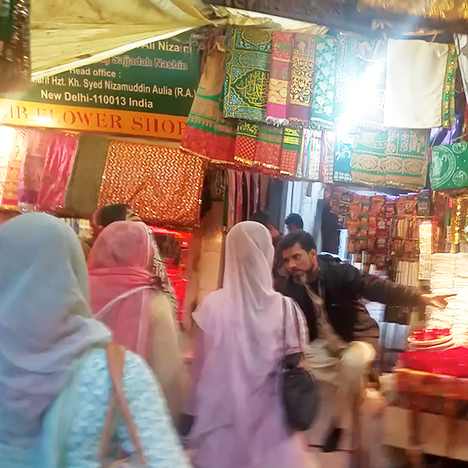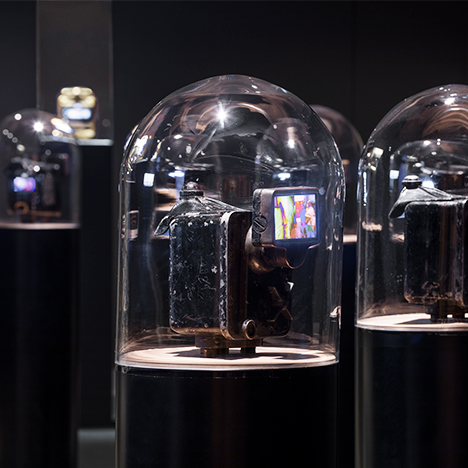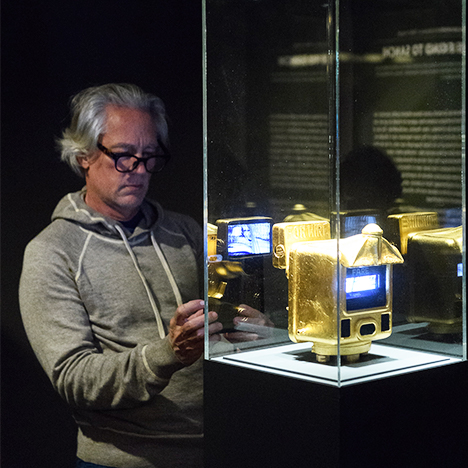
There are more than 4,000 religions on earth, and sometimes it feels easier to notice the differences between communities than the many things they have in common. For example, despite their differences, all of the world’s major religions emphasize the importance of sacred spaces—sites that are considered holy and are visited by millions of people every year on pilgrimages.
Sometimes pilgrimage routes are close to one another, bringing people from different walks of life to the same region in the act of spiritual devotion or exploration. India, for example, is home to prominent pilgrimage sites for Hindus, Jews, Muslims, and Buddhists.
Taking Many Paths

The religious history and diversity of India inspired artist and designer Ghiora Aharoni in his work titled The Road to Sanchi. For The Road to Sanchi (2016), now on view in the Rubin Museum’s exhibition Sacred Spaces: The Road to”¦, Aharoni traveled to Sanchi in central India to see the Great Stupa, a holy structure that depicts the lives and teachings of the Buddha and is said to contain Buddhist relics.
Aharoni also trekked to India’s oldest synagogue at Mattancherry, the Sufi shrine at Nizamuddin in Delhi, and the ghats of Varanasi, recording his journey to each site. Ultimately, what surprised the artist the most was the process of the pilgrimage itself. The journeys were rarely easy, often requiring backroads and multiple forms of transportation to arrive at the destination. For the artist, the act of pilgrimage began to transcend faith and time:
“A pilgrimage allows us to experience time in a different way: this is a journey that’s been taken by thousands, if not millions, of others—we’re participating in a ritual which so many have done before us and so many will do after us. And at that moment, linear time collapses—the past, the present, and the future all exist equally—and you shift into an alternative realm of time.”
—Ghiora Aharoni
Creating The Road to Sanchi

How can this experience be translated into art? For Aharoni, it started with a ubiquitous object from the pilgrimage routes of the past: antique taxi meters. The artist outfitted several meters to present the video recordings that he captured during his pilgrimage travels in India on rickshaw—always presenting the journey but never the destination of the sacred sites. Upon viewing the taxi meter installations, it’s clear to viewers how similar each journey is and how time and space collapse as they themselves walk a path through the Museum gallery.
A Common Road

Beside the crescent-shaped arrangement of taxi meter sculptures, which resembles a row of stupas, sits a separate meter sculpture leafed with gold. This work, titled When All Roads Are One (2017), merges the artist’s films to Sanchi, Nizamuddin, Varanasi, and Mattancherry into one vivid, progressive journey, emphasizing India’s long history of cultural and religious plurality. The frame and narrative of the film create an expression of the celestial and terrestrial that connects humankind and the divine.
At a time in India and around the world when religious plurality is often linked with xenophobia, persecution, and even violence, Ghiora Aharoni’s works are a provocative tool to help us recognize that we all walk the same path.

